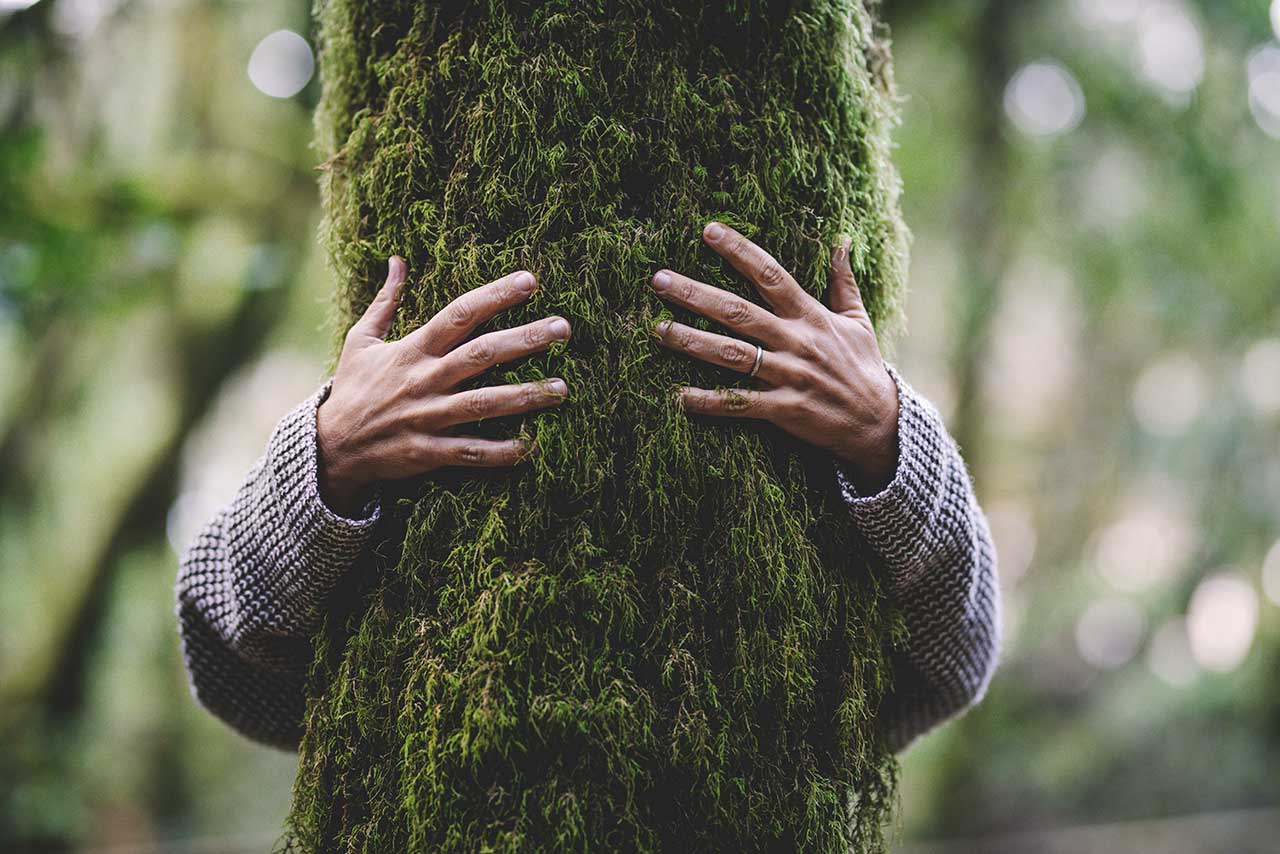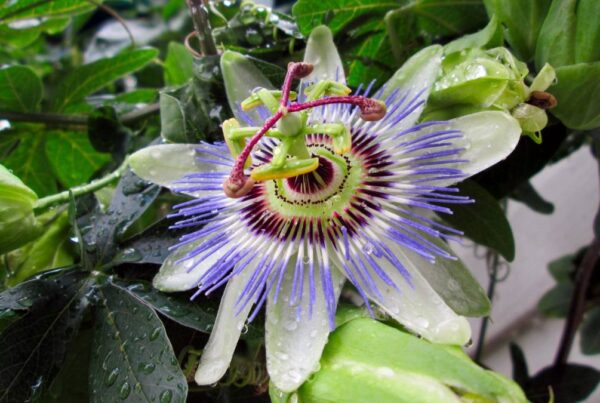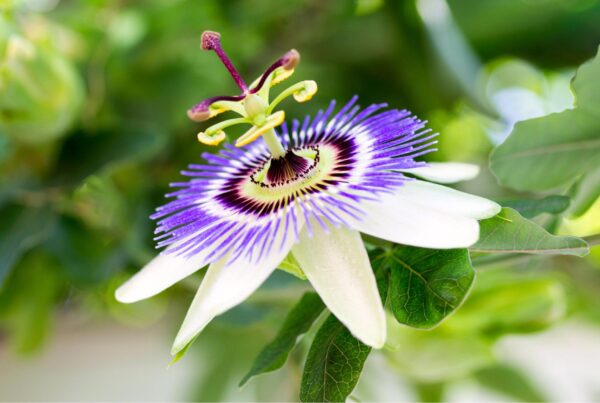During the tech boom in Japan during the 1980s, a revolutionary health practice emerged, born from the need to reconnect an increasingly sedentary and urbanized population with nature.
This practice is known as Shinrin-Yoku or “forest bathing,” and it offers a simple yet profound antidote to the stresses of modern life.
Rooted in the ancient Japanese animistic tradition of Shinto, Shinrin-Yoku is not merely a walk in the woods, but a mindful immersion in the atmosphere of the forest. In fact, Shinrin-Yoku translates from Japanese as “bathing in the atmosphere of the forest.”
Forest bathing invitations make it easy for anyone to practice Shinrin-Yoku. They serve as gentle guides to help you fully engage your senses and expand your awareness outdoors. These invitations are not tasks to be completed, but rather suggestions that open your senses and quiet your mind, allowing you to receive the gifts of the forest.
From the whisper of leaves in the breeze to the earthy scent of moss, each invitation encourages a deeper connection with nature and, by extension, with ourselves.
As you explore these forest bathing invitations, you will journey into a practice that has not only captivated Japan but has also spread globally, offering a universal language of healing, peace and tranquillity in our fast-paced world.
Whether you’re a seasoned forest bather or new to the practice of nature-based therapy, these invitations promise to enrich your experience of nature, promoting mental well-being and giving you a deeper sense of interconnectedness with the world around you.
The Benefits of Forest Bathing
Research has shown that regular practice of Shinrin-Yoku can yield significant health benefits:
- Stress Reduction: Exposure to forest environments lowers cortisol levels, heart rate, and blood pressure.
- Improved Immune Function: Phytoncides, antimicrobial compounds released by trees, have been shown to boost the immune system.
- Enhanced Mood: Time spent in nature can reduce symptoms of anxiety and depression.
- Increased Focus and Creativity: Nature immersion can restore attention fatigue and stimulate creative thinking.
- Better Sleep: Regular forest bathing can help regulate sleep patterns and improve sleep quality.
- Accelerated Recovery: Patients recovering from surgery or illness may experience faster healing when exposed to nature.
Remember to approach each forest bathing invitation with a sense of curiosity and openness. Enjoy the moment by immersing yourself in your immediate experience without judgment or expectation.
Feel free to modify these invitations based on your surroundings and personal preferences. The key is to remain open, curious, and fully present to the wonders of nature during your forest bathing experience.
A Collection of Forest Bathing Invitations
1. The Sound Symphony
Close your eyes and listen intently for 5 minutes. Try to identify as many distinct sounds as possible – from the rustle of leaves to the chirping of distant birds. Notice how the forest’s soundtrack changes and evolves.
2. Textural Exploration
Find 5 different textures in the forest. Gently touch tree bark, moss, leaves, stones, and soil. Notice the differences in temperature, moisture, and texture. How does each surface feel against your skin?
3. Color Palette
Slowly scan your surroundings and identify 10 different shades of green. Then, look for unexpected colors hidden in the forest. Can you find traces of red, purple, or orange?
4. Scent Journey
As you walk, pause occasionally to inhale deeply through your nose. What scents can you detect? Notice how the fragrances change as you move from sun-dappled clearings to shaded areas.
5. Mindful Movement
Walk for 10 minutes at an extremely slow pace, feeling every step. Notice how your feet connect with the earth, the shift of your weight, and the movement of air around your body as you progress.
6. Sky Glimpses
Find a comfortable spot to lie down and look up at the sky through the canopy. Watch how the leaves and branches frame the sky, creating ever-changing patterns as they move in the breeze.
7. The Breathing Forest
Place your hand on a tree trunk and close your eyes. Try to synchronize your breath with the subtle movements of the tree. Imagine you’re breathing together with the forest.
8. Taste of the Forest
If you’re knowledgeable about edible plants and it’s permitted in your area, taste a wild edible like a berry or leaf. If not, simply notice how the forest air tastes as you inhale deeply through your mouth.
9. Water Whispers
If there’s a stream or river nearby, sit beside it and close your eyes. Listen to the water’s movement and feel its coolness on your skin. How many different water sounds can you distinguish?
10. Micro World Exploration
Find a small patch of forest floor (about 1 square foot) and examine it closely for 5 minutes. Notice the intricate world of tiny plants, insects, and soil textures. How much life can you observe in this small space?
11. Tree Whisperer
Choose a tree that calls to you. Spend 10 minutes with it, observing its unique features. Gently place your hand on its trunk and imagine what stories it could tell if it could speak. What wisdom might it share?
12. Shadow Play
Find a sunny spot where tree shadows fall. Observe how the shadows move and dance with the breeze. Notice the patterns they create on the ground. How do these shifting shapes make you feel?
13. Nature’s Palette
Collect fallen leaves, petals, or other natural objects (without harming living plants). Arrange them by color to create a natural color wheel. Reflect on the diversity of hues in nature.
14. Forest Meditation
Find a comfortable seated position. Close your eyes and focus on your breath for 5 minutes. Allow the forest sounds to wash over you without trying to identify them. Notice how your body feels in this environment.
15. Barefoot Wandering
If it’s safe to do so, remove your shoes and socks. Walk slowly, feeling the earth beneath your feet. Notice the different textures and temperatures. How does this direct contact with the ground affect your body and mind?
16. Cloud Watching
Find an open area where you can see the sky. Lie down and watch the clouds move overhead. Let your imagination wander – what shapes or stories do you see in the clouds?
17. Nature’s Rhythms
Sit quietly and try to identify different rhythms in the forest – the sway of branches, the pulsing of insect sounds, your own heartbeat. How do these rhythms interact and influence each other?
18. Gratitude Stones
Find a small stone that fits comfortably in your hand. As you hold it, think of things in nature you’re grateful for. With each gratitude, give the stone a gentle squeeze, imbuing it with your positive energy.
19. Animal Perspectives
Choose an animal that lives in the forest (bird, squirrel, fox, etc.). Spend 10 minutes imagining how this animal might experience the forest. How would it move? What would it notice? How might it perceive you?
20. Nature’s Artistry
Look for interesting patterns in nature – the veins of a leaf, the arrangement of pine needles, the spiral of a snail shell. Spend time appreciating these intricate designs. What emotions or thoughts do they evoke?
21. Forest Aromatherapy
Find a spot with rich forest scents. Cup your hands around your nose and mouth, creating a small “scent chamber.” Breathe deeply, noticing how the forest air feels in your lungs. How does this focused breathing affect your mood?
22. Nature’s Time Machine
Choose a very old tree or rock. Place your hand on it and imagine all the changes it has witnessed over time. Reflect on your own place in the grand timeline of nature.
23. Light and Shadow Dance
Find a spot where sunlight filters through the canopy. Watch how light and shadow interplay on the forest floor. Notice how this dance changes with the breeze. How does this visual rhythm affect your sense of time?
24. Forest Floor Mosaic
Lie down on the forest floor (on a mat if needed). Look closely at the ground around you. Notice the intricate patterns of fallen leaves, twigs, and small plants. How many layers can you identify in this natural mosaic?
25. Wind Whispers
Stand still with your eyes closed. Focus on feeling the wind on your skin. Notice its direction, temperature, and intensity. Does it carry any scents? How does it make different parts of the forest sound?
26. Nature’s Paintbrush
Find a muddy spot or sandy area. Use a stick as a paintbrush and create a nature-inspired drawing on the ground. Let the forest guide your creativity. Reflect on the temporary nature of your art.
27. Interconnected Web
Choose a plant or tree. Observe it closely, then expand your awareness to see what it’s connected to – the soil, other plants, insects, etc. Keep expanding your view, noticing how everything in the forest is interconnected.
28. Silent Conversation
Find a conversation partner in nature – it could be a tree, a rock, or a small plant. Spend 10 minutes in silent “dialogue” with it. What might it tell you if it could speak? What questions would you ask?
29. Forest Soundscape
Close your eyes and listen to the forest sounds. Mentally separate them into layers – background sounds, middle-ground, and foreground. Create a mental “music score” of the forest symphony.
30. Texture Meditation
Find a comfortable seat and close your eyes. Reach out and touch whatever is within arm’s reach – leaves, bark, moss, soil. Focus entirely on the sensations in your fingertips. How does this focused touch change your perception of the forest?
31. Woodland Yoga
Find a clear spot and perform a few gentle yoga poses or stretches. Notice how your body feels in harmony with the forest environment. How does the uneven ground affect your balance and posture?
32. Photosynthesis Visualization
Stand near a tree in sunlight. Close your eyes and imagine you’re a leaf on the tree. Visualize the process of photosynthesis happening within you, absorbing sunlight and converting it into energy. How does this change your perception of the forest’s energy?
33. Forest Floor Micro-Journey
Lie on your stomach (on a mat if needed) and imagine you’re the size of an ant. Observe the forest floor from this new perspective for 10 minutes. What new worlds do you discover in this miniature landscape?
34. Tree Ring Storytelling
Find a tree stump or fallen log where you can see the rings. Each ring represents a year in the tree’s life. Create a story about what might have happened in the forest during different years of this tree’s life.
35. Nature’s Textures Collage
Collect small, fallen natural objects with different textures (always being mindful not to disturb living plants or creatures). Arrange them to create a tactile “collage” on the forest floor. Explore it with your eyes closed, using only touch.
36. Forest Soundscape Mapping
Sit quietly and listen to the forest sounds for 10 minutes. On a piece of paper, create a “map” of the sounds you hear, placing them in relation to where you’re sitting. Use symbols or words to represent different sounds.
37. Seasonal Reflection
Find evidence of the current season in your surroundings (e.g., new buds in spring, colorful leaves in autumn). Reflect on how the forest changes through the seasons and how this cycle relates to changes in your own life.
38. Root Connection Meditation
Sit at the base of a large tree. Close your eyes and imagine your own roots growing from the base of your spine, intertwining with the tree’s roots deep into the earth. Feel the stability and groundedness this connection provides.
39. Forest Color Palette
Look around and identify the most dominant color in your surroundings. Then, challenge yourself to find 10 different shades or variations of this color in nature. How many subtle variations can you discover?
40. Nighttime Forest Bathing
If safe and possible, experience the forest at night. Notice how your other senses become heightened as visibility decreases. Listen for nocturnal animals, feel the cooler air, and observe how the forest atmosphere changes after dark.
41. Forest Fibonacci
Look for examples of the Fibonacci sequence or golden ratio in nature, such as spiral patterns in shells, pinecones, or the arrangement of leaves on a stem. Reflect on the mathematical harmony present in the forest.
42. Elemental Connection
Spend time connecting with each of the four elements in the forest: feel the earth beneath you, listen to the wind, find a source of water (even dew on leaves), and feel the warmth of sunlight. How does each element make you feel?
43. Woodland Qi Gong
Practice slow, flowing movements inspired by Qi Gong. Let the forest’s energy guide your movements. How does this mindful movement change your perception of the space around you?
44. Nature’s Perfume
Create a “forest perfume” by gently rubbing aromatic leaves or flowers between your fingers. Mix different scents. How does this focused olfactory experience change your perception of the forest?
45. Tree Silhouette Meditation
Find a spot where you can see trees silhouetted against the sky. Observe their shapes and how they move in the wind. Let your mind quiet as you focus on these natural forms.
46. Forest Time Capsule
Imagine you’re creating a time capsule to capture this moment in the forest’s life. What would you put in it? How would you describe the current state of the forest to future generations?
47. Mycelial Network Visualization
Close your eyes and visualize the vast network of mycelium beneath your feet, connecting trees and plants. Imagine being part of this underground communication network. What messages might be passing through?
48. Negative Space Awareness
Instead of focusing on the trees and plants, turn your attention to the spaces between them. Notice the shapes formed by the sky visible through the canopy or the gaps between tree trunks. How does this shift your perception of the forest?
49. Forest Soundscape Remix
Listen to the forest sounds, then try to recreate them using your voice or by gently tapping on trees or leaves. How does this active participation change your relationship with the forest’s auditory environment?
50. Growth Rings Meditation
Find a comfortable spot and sit cross-legged. Imagine you’re a tree, adding a new growth ring each year. With each deep breath, visualize a new ring forming, representing your experiences and growth. How does this connect you to the forest’s sense of time and growth?
Embracing The Forest Bathing Practice
As you explore forest bathing, remember that there is no right or wrong way to practice. The key is to be present, open, and receptive to the forest environment. Move slowly, breathe deeply, and allow yourself to be guided by your senses and intuition.
Regular forest bathing practice can deepen your connection with nature and promote physical and mental well-being. Consider setting aside time each week for a forest bathing session, even if it’s just for 10-20 minutes.
In our hyperconnected 21st-century world, where stress and disconnection are all too common, forest bathing offers a path back to balance and harmony. By embracing this mindful practice, you can not only nurture your own well-being but also cultivate a deeper appreciation for the natural world that sustains us all.
So, the next time you find yourself near a forest or wooded area, consider answering the call of Shinrin-Yoku. Step into the embrace of the trees, open your senses, and allow the healing power of nature to wash over you.
Your mind, body, and spirit will thank you.
- 10 Sustainable Travel Trends Driving The Future of Tourism - March 9, 2025
- 10 Tips To Sell Out Your Transformational Retreats In 2025 - February 20, 2025
- Build 10 Habits That Free Up Your Time With Mindful Coaching - February 11, 2025





